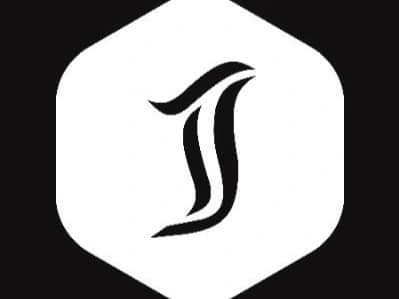订阅 wiki
Share wiki
Bookmark
JOIN
JOIN
JOIN 是一个代币化平台,旨在将社交媒体、加密货币支付和游戏整合到一个应用程序中。该项目旨在创建一个生态系统,通过其原生代币,用户互动产生经济价值。[1]
概述
Join 生态系统被描述为一个面向创作者、社区和 Web3 用户的多合一平台。它试图将社交、游戏和支付功能整合到统一的体验中,从而弥合传统 Web2 应用程序和新兴 Web3 空间之间的差距。该项目声明的目标是构建一个“创意、连接、游戏、社交、支付、招聘、娱乐等市场”,用户的参与将直接获得奖励。核心概念是提供 常见 于 Web2 平台的易于使用的界面,同时融入 Web3 原则,如用户拥有的资产和基于代币的奖励系统。[2]
该平台旨在通过提供基于奖励的模式,充分利用 Web3 创作者经济和全球游戏市场的增长。JOIN 代币是平台内所有经济互动的核心要素,促进一个系统,其中内容创作、游戏和社区参与等活动旨在为用户创造切实的价值。根据项目资料,其在 Discord 平台上的社区由超过 6,900 名成员组成。[3]
产品
Join 生态系统计划在其平台内提供多种集成产品,以支持其社交、金融和游戏功能。
Joinda 钱包和卡
主要产品是 Joinda 钱包,这是一个原生数字钱包,旨在存储、转换和管理 JOIN 代币以及潜在的其他数字资产。该项目声明该钱包将是非托管的,这意味着用户保留对其私钥和资金的完全控制权。作为钱包的补充,该项目计划推出 Joinda 卡,这是一张与用户钱包关联的实体借记卡。该卡旨在允许用户直接在商家处使用其 JOIN 代币持有量购买商品和服务,旨在将应用内收益与现实世界的购买力联系起来。[1]
Joinda 任务应用程序
Joinda 任务应用程序是一款旨在游戏化用户在生态系统内的参与度的应用程序。通过此应用程序,用户可以参与各种任务和活动以赚取奖励。这些操作包括发布内容、玩集成游戏、推荐新用户以及参与挖矿活动。该应用程序被描述为具有排行榜以促进竞争、进度跟踪和可解锁的成就(如级别或徽章),所有这些都旨在推动平台参与。最近的功能更新添加了应用内电子邮件验证,以增强帐户安全性。[2]
去中心化启动板
Join 还计划包括一个去中心化启动板。此功能旨在帮助新的 Web3 项目启动并建立其社区。该启动板被描述为游戏化和社区驱动的,利用平台的任务系统来吸引用户参与新项目。此组件旨在吸引其他开发人员及其社区加入 Join 生态系统,创建网络效应并扩展平台的内容和用户基础。[1]
特点
该平台由几个关键特性定义,这些特性旨在创造全面且有益的用户体验。
多合一平台
Join 的核心概念是将多个服务集成到一个应用程序中。通过结合社交媒体提要、游戏体验和支付服务,该项目旨在提供无缝的用户体验,并减少在不同平台之间切换以进行这些活动的摩擦。这种统一的方法旨在创建一个独立的自包含环境,用户可以在其中进行社交、游戏和交易,而无需离开生态系统。[1]
通过参与赚取
该平台的核心机制是其奖励系统,该项目将其称为“奖励金融 (ReFi)”。通过一个为各种活动分配 JOIN 代币和“Joinda 积分”的系统,激励用户参与生态系统。这些活动包括创建和分享内容、玩游戏、将新用户推荐到平台以及完成以社区为导向的任务。此模型旨在直接补偿用户参与为网络带来的价值。[2]
游戏化社区工具
Join 利用游戏化来推动用户参与并支持生态系统增长。Joinda 任务应用程序和去中心化启动板是这种方法的主要示例。这些工具使用类似游戏的机制,例如任务、排行榜和奖励,以鼓励积极参与并帮助新项目建立初始用户基础。此策略旨在使社区互动更具活力,并对用户更具吸引力。[1]
非托管安全性
该平台强调用户对数字资产的控制。它采用非托管架构设计,确保用户对其私钥拥有完全控制权,从而对其资金拥有完全控制权。该项目还声明,它旨在提供精简而简单的入门流程,使平台能够为可能不熟悉 Web3 概念的用户所访问,从而降低更广泛受众的准入门槛。[1]
生态系统
Join 生态系统被设计为一个以 JOIN 代币为中心的闭环经济。该模型从用户参与平台的社交和游戏功能开始。内容创作、社交互动和游戏等活动以 JOIN 代币和 Joinda 积分的形式产生奖励。然后,这些奖励通过集成的非托管 Joinda 钱包进行管理。
一旦获得,代币在生态系统内具有多种功能。用户可以将其用于应用内服务,例如提高其内容的可见性、购买广告位或支付高级订阅费用。这会产生对代币的内部需求。生态系统通过计划中的 Joinda 卡扩展到外部使用,这将允许用户将其赚取的代币用于现实世界的购买。去中心化启动板通过吸引新项目及其社区进一步扩展了生态系统,他们将参与并为平台的经济做出贡献。整个周期旨在创建一个自我维持的模型,其中用户活动驱动 JOIN 代币的效用和流通。[1] [4]
用例
该平台旨在支持不同类型用户的各种用例。
- 内容创作者可以通过基于互动的直接代币奖励来货币化他们的工作和社区参与。
- 游戏玩家可以参与边玩边赚的活动,并因其在集成到平台中的游戏中的时间和成就而获得 加密货币。
- 新的 Web3 项目可以利用去中心化启动板和任务系统来促进社区增长,并以游戏化的方式吸引初始用户基础。
- 用户可以在 Joinda 钱包中存储、转换和管理他们的数字资产,并将其用于应用内服务或通过 Joinda 卡进行外部购买。
- 企业或个人可以使用 JOIN 代币作为付款方式购买广告位或提高其个人资料和内容的可见性。
这些用例的摘要突出了平台将在线参与与金融效用联系起来的目标。[1]
架构
Join 平台被描述为具有 混合 Web2/Web3 架构。此模型旨在结合两种技术范例的优势。从 Web2 中,它采用对用户友好界面、可访问性和无缝用户体验的关注,旨在让传统社交媒体和游戏应用程序的用户感到熟悉。
从 Web3 中,它融入了去中心化和用户所有权的核心原则。反映这一点的关键技术特性是其非托管设计。通过确保用户对其私钥保持完全控制权,该架构将资产所有权直接置于用户手中,这与 Web2 平台的集中式模型截然不同,在 Web2 平台中,用户数据和资产由公司控制。这种 混合 方法旨在提供 区块链 技术的优势,例如透明度和用户主权,而不会牺牲驱动主流采用的可用性和可访问性。[1]
代币经济学
Join 生态系统的经济模型围绕其原生实用代币 JOIN 代币构建。
JOIN 代币
JOIN 代币是核心实用代币,可促进平台上的交易、奖励和其他经济功能。它旨在成为生态系统经济的核心。该项目声明其 代币经济学 模型是为可持续性而构建的,其中包含旨在驱动效用和需求的机制。其中一种机制是代币销毁,其中用于平台实用程序的代币的 一部分 将永久从流通中移除。这是一种通货紧缩措施,旨在随着时间的推移管理代币的总供应量。[4]
分配
- 关于团队、国库、公开销售或生态系统奖励等类别的具体代币分配百分比的信息在提供的材料中不可用。[1]
实用程序
JOIN 代币设计有几个主要实用程序,以在生态系统中创造需求。
- 提升: 用户可以花费 JOIN 代币来提高其内容或个人资料在平台社交提要上的可见性和覆盖范围。
- 广告: 该代币用作在应用程序内购买广告位的货币。
- 推荐: 它用作奖励,分配给成功将新成员推荐到平台的用户。
- 订阅: 该代币可用于支付平台提供的高级功能或基于订阅的服务。
这些实用程序旨在确保代币在平台的经济中得到积极使用。[1]
治理
关于 JOIN 代币的治理模型的信息,例如代币持有者是否对项目开发或协议变更拥有投票权,在提供的材料中不可用。[1]
合作伙伴关系
JOIN 宣布与 ChainGPT、Seedify 和 LayerZero 建立合作伙伴关系。该项目还得到了 Gotbit 的支持,并入选了 NVIDIA Inception Program。[2]
发现错误了吗?
